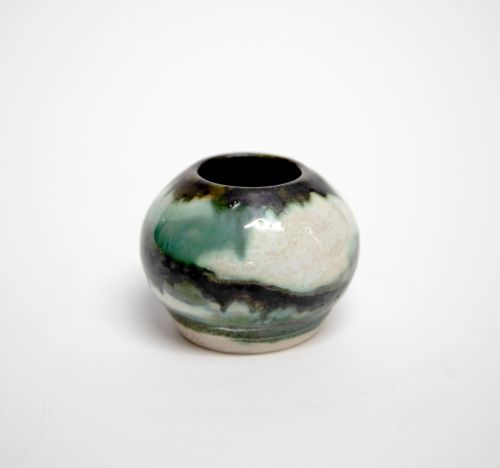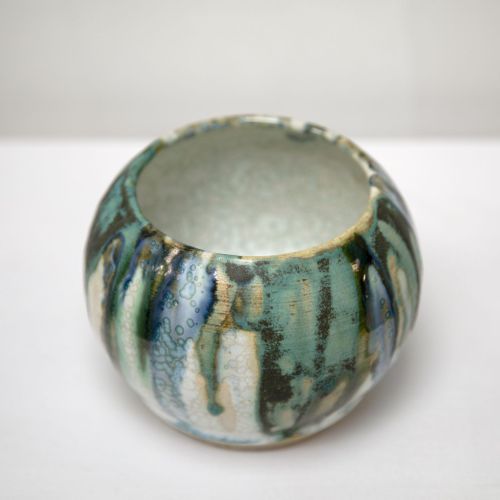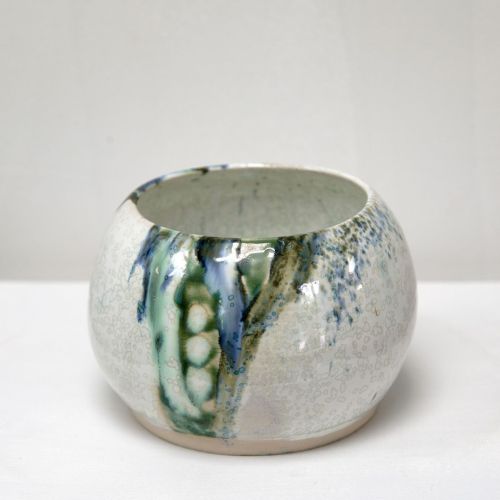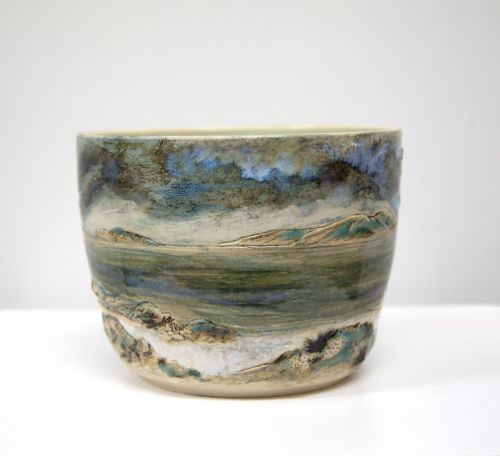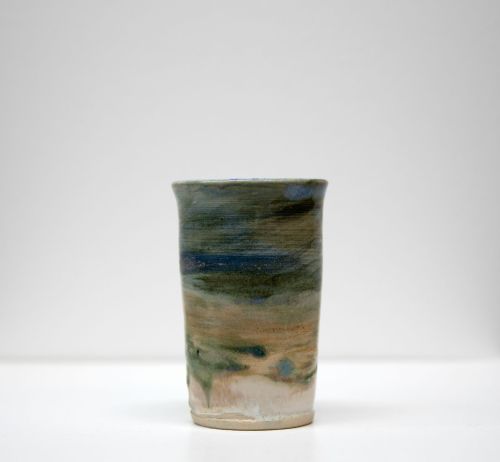Cart
pam matthews
Pam Matthews is a north of England based ceramicist with a deep affinity for Scotland. Having rediscovered a love for ceramics after a break from working with clay for thirty years, she takes inspiration from the coastlines of the UK. Each piece is first hand-thrown using a white stoneware clay. Once leather-hard, a range of techniques are used, including sculpting by adding clay and taking away parts of each vessel, creating textures, incisions and horizons suggesting land, sea and sky. After bisque firing, a wide range of oxides are applied: washes, underglazes and glazes in a painterly fashion building up depth of tone, colour and tactile qualities. Each piece is then fired again in an electric kiln. Pam is fascinated with experimenting and exploring the magical effects and alchemy of layering glazes, and how the textures and curvatures of the individual vessel impact on the end results.
Pam Matthews is a north of England based ceramicist with a deep affinity for Scotland. Having rediscovered a love for ceramics after a break from working with clay for thirty years, she takes inspiration from the coastlines of the UK. Each piece is first hand-thrown using a white stoneware clay. Once leather-hard, a range of techniques are used, including sculpting by adding clay and taking away parts of each vessel, creating textures, incisions and horizons suggesting land, sea and sky. After bisque firing, a wide range of oxides are applied: washes, underglazes and glazes in a painterly fashion building up depth of tone, colour and tactile qualities. Each piece is then fired again in an electric kiln. Pam is fascinated with experimenting and exploring the magical effects and alchemy of layering glazes, and how the textures and curvatures of the individual vessel impact on the end results.


